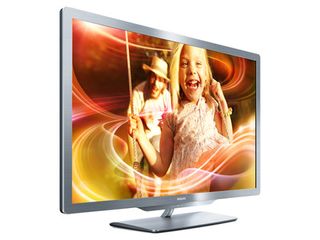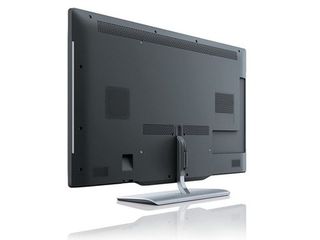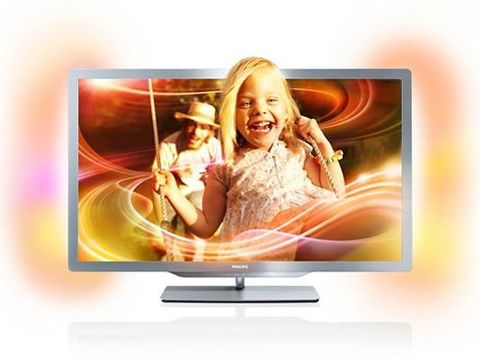Why you can trust TechRadar

Despite seeing the arrival - at last - of a Freeview HD tuner on a Philips TV, the 42PFL7666 also witnesses the debut of Easy 3D, the brand's stab at the cheaper, easier-on-the-eye format beloved of 3D cinema goers.
Let's pass over 3D for a minute and instead consider the Philips 42PFL7666's burgeoning online dimension, which is powered by Wi-Fi. Accessed from the set's fairly rudimentary user interface is Net TV, a screen studded with apps and an open internet browser.
Apps include BBC iPlayer, YouTube, Facebook, TuneIn Radio, Aupeo (another radio app), Picasa, Twitter, Acetrax and Box Office 365, among others. There's none of the polished approach of Sony or Samsung, and nor is there access to LOVFiLM or Demand Five, but it's a relatively fair choice nonetheless.
If you already have a backlog of digitised video, music and photos to get through, the Philips 42PFL7666's DLNA home networking will be just as attractive as Net TV. It's marketed as tying together all kinds of network devices including a PC or Mac, and even tablets and smartphones.

It's all true, although it boils down to something rather less ambitious; straightforward networking of video, music and photo files, while the Philips 42PFL7666's user interface can be navigated using apps on an iPhone or Android smartphone or tablet.
The Philips 42PFL7666 can also record live TV to a USB stick, although the residual feature that enables you to pause and rewind TV will doubtless prove to be just as useful.
Ins and outs are fairly standard, including four HDMI inputs, a wired Ethernet LAN option and a Common Interface slot. There's also an optical digital audio output for attaching the Philips 42PFL7666 to a home cinema system, although its powerful 28W makes that less essential compared to almost all other flatscreen TVs.
While it would be wrong to call passive 3D a lower quality 3D system (we've seen some storming 3D performances from passive sets such as LG's 55LW980T), we remain surprised that Phillips has chosen it for some of its LED TVs.
3D, of course, is all about immersion, and the inclusion of Ambilight, here its Spectra 2 format (on the left and right sides of the TV only), certainly won't hurt in that regard, although it's really designed to prevent you getting tired eyes.
However, it's active shutter glasses that tend to make 3D a fatiguing experience, and we expect no problems with the two pairs of passive glasses in the Philips 42PFL7666's box. Each pair of 3D glasses comes in a small drawstring black felt bag, which weigh about the same as the flimsy glasses themselves.
Away from 3D is the powerful Pixel Precise HD processing engine. As well as offering - wait for it - four trillion colours, Pixel Precise HD also promises 500,000:1 contrast ratio, Super Resolution (an upscaling tech), HD Natural Motion and a 400Hz mode that Phillips calls Perfect Motion Rate. The latter two are designed to keep images free from blur and judder, and so retain their Full HD detail.
Jamie is a freelance tech, travel and space journalist based in the UK. He’s been writing regularly for Techradar since it was launched in 2008 and also writes regularly for Forbes, The Telegraph, the South China Morning Post, Sky & Telescope and the Sky At Night magazine as well as other Future titles T3, Digital Camera World, All About Space and Space.com. He also edits two of his own websites, TravGear.com and WhenIsTheNextEclipse.com that reflect his obsession with travel gear and solar eclipse travel. He is the author of A Stargazing Program For Beginners (Springer, 2015),


